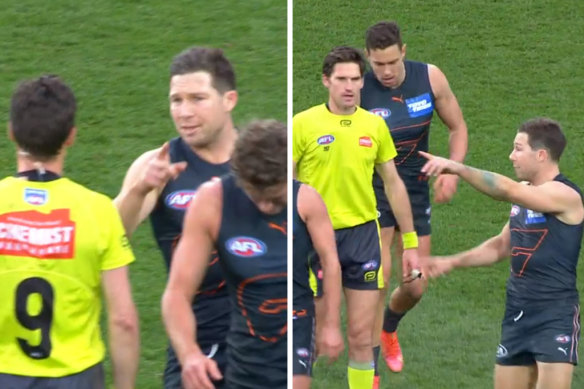By Jake Niall
The AFL believes that the contentious crackdown on dissent towards umpires has already seen improved respect for umpires at grassroots level by fans and players.
AFL’s general manager of game development Rob Auld said the AFL’s tougher stance on dissent - which has seen many 50m penalties awarded against even mildly demonstrative players - had improved the way umpires had been treated at both junior and senior levels in local football.
“It absolutely has (improved behaviours),” Auld said of the “trickle down effect” for umpiring at a local community football level. “And a significant part of that is improving the behaviour towards umpires.
“And I’ve seen that at both junior and senior level ... is a noticeable and intentional effort by all involved to show greater respect to our umpires, both association and club-appointed umpires.
“And as a result of that … the match day environment in community footy is the beneficiary of that.”
The crackdown on dissent by players has been viewed in some quarters as excessive, sparking debate about what players should be permitted to say or demonstrate physically when a decision goes against them.
Dissent over decisions: Gold Coast players put their arms out over a call.
Auld said the impact of the tougher stance on dissent towards umpires had happened “only in the last two to four weeks” - the period in which community and junior football has resumed.
“So it’s actually been incredibly quick and I’ve been pleasantly surprised as to how much difference it’s made.
“As soon as it was in place at the elite level, it immediately trickled through.”
Auld described the better-behaved trend as one he had observed both first-hand and “anedoctally.” He said that the AFL, which oversees the game at all levels as the governing body, did not have data yet to back up his impression.
“Too early to quantify, and quantification would come from looking at the numbers ... yellow cards and red cards.”

Last year’s incident between Toby Greene and umpire Matt Stevic.
Auld said the improvement in treatment of umpires “improves the match day environment, which is so critical to getting and keeping people (to umpire).”
He said the improvement was from both players and fans. “It’s been fans as much as players.”
He said there remained a shortfall for community umpiring of about 6000 nationwide - a shortage that the AFL and chief executive Gillon McLachlan have often cited in the context of making umpiring more attractive by reducing abuse by fans and players.
Auld said the abuse of umpires was “contributing” to the shortfall but there was also another key factor: the growth in women’s football. “What’s actually driven it more broadly is just the growth in female footy outpaces most things, including umpiring.
“It’s not the only factor and it’s certainly not the sole factor.”
Auld said remuneration wasn’t a key driver of why umpires walked away. “No one’s going to look a few bucks in the eye and say no, right? But it doesn’t sit high in the ranks of why umpires don’t stay.”
Keep up to date with the best AFL coverage in the country. Sign up for the Real Footy newsletter.